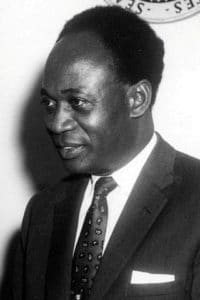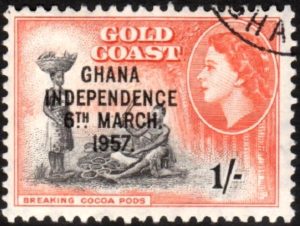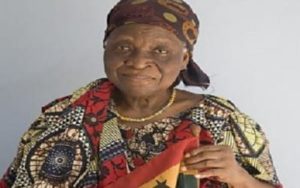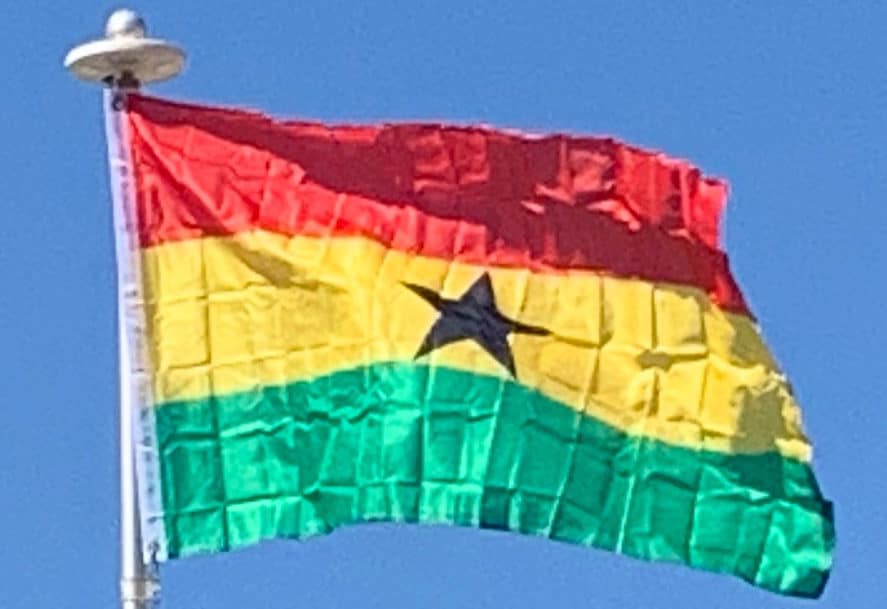
Nkrumah won a majority in the Gold Coast legislative election, 1951 for the Gold Coast Legislative Assembly in 1952. Nkrumah was appointed leader of the Gold Coast’s government business. The Gold Coast region declared independence from the United Kingdom on 6 March 1957 and established the nation of Ghana.
On 6 March 1957 at 12 am, the Gold Coast, Ashanti, the Northern Territories and British Togoland were unified as one single independent dominion within the British Commonwealth under the name Ghana. This was done under the Ghana Independence Act 1957. On 1 July 1960, following the Ghanaian constitutional referendum and Ghanaian presidential election, Nkrumah declared Ghana as a republic as the first President of Ghana. 6 March is the nation’s Independence Day and 1 July is now celebrated as Republic Day.

At the time of independence Nkrumah declared, “My first objective is to abolish from Ghana poverty, ignorance, and disease. We shall measure our progress by the improvement in the health of our people; by the number of children in school, and by the quality of their education; by the availability of water and electricity in our towns and villages; and by the happiness which our people take in being able to manage their own affairs. The welfare of our people is our chief pride, and it is by this that the government will ask to be judged.”.
The flag of Ghana, consisting of the colors red, gold, green, and a black star, became the new flag in 1957 when Gold Coast gained its name Ghana. It was designed by Theodosia Salome Okoh; the red represents the blood that was shed towards independence, the gold represents the industrial minerals wealth of Ghana, the green symbolizes the rich grasslands of Ghana, and the black star is the symbol of the Ghanaian people and African emancipation.

Nkrumah was the first African head of state to promote the concept of Pan-Africanism, which he had been introduced to during his studies at Lincoln University, Pennsylvania in the United States, at the time when Marcus Garvey was becoming famous for his “Back to Africa Movement”. Nkrumah merged the teachings of Marcus Garvey, Martin Luther King, Jr. and the naturalized Ghanaian scholar W. E. B. Du Bois into the formation of 1960s Ghana.
Osagyefo Dr. Kwame Nkrumah, as he became known, played an instrumental part in the founding of the Non-Aligned Movement, and in establishing the Kwame Nkrumah Ideological Institute to teach his ideologies of communism and socialism. His life achievements were recognized by Ghanaians during his centenary birthday celebration, and the day was instituted as a public holiday in Ghana (Founder’s Day).
Operation Cold Chop and Aftermath:
The government of Nkrumah was subsequently overthrown by a coup by the Ghana Armed Forces codenamed “Operation Cold Chop”. This occurred while Nkrumah was abroad with Zhou Enlai in the People’s Republic of China, on a fruitless mission to Hanoi in Vietnam to help end the Vietnam War. The coup took place on 24 February 1966, led by Col. Emmanuel Kwasi Kotoka. The National Liberation Council (NLC) was formed, chaired by Lt. General Joseph A. Ankrah.
